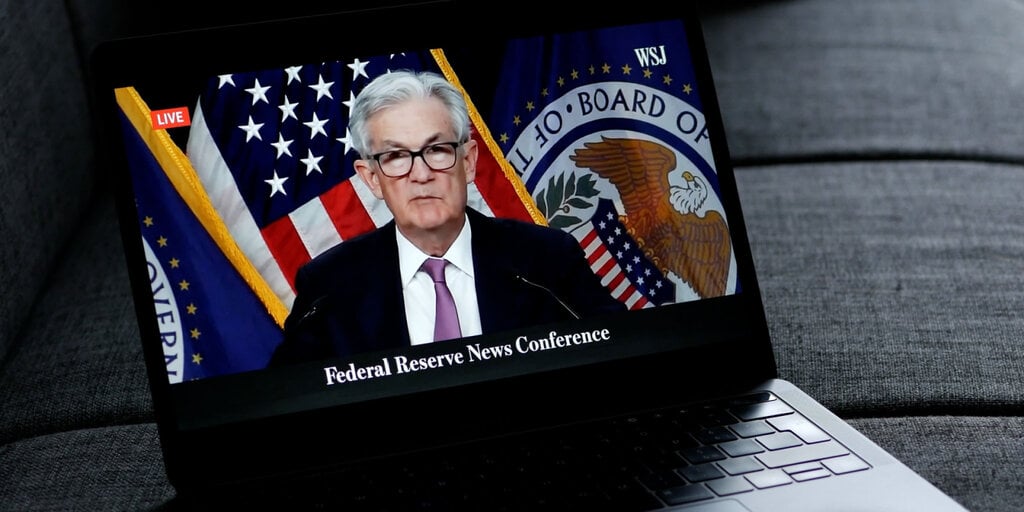In brief
- Bitcoin rose about 2% shortly after the Federal Reserve left interest rates unchanged.
- BTC has gained 22% over the past month.
- The Fed was widely expected to keep interest rates intact.
The Federal Reserve held interest rates steady on Wednesday as U.S. President Donald Trump’s tariffs continued to cloud the central bank’s economic outlook.
At a target range of 4.25% to 4.5%, the Fed was reluctant to change its benchmark borrowing rate for a fourth straight time. The decision was widely expected, despite weeks of pressure from Trump on Fed Chair Powell to start slashing borrowing costs.
In a statement, the Federal Reserve flagged heightened levels of economic uncertainty, underscoring a data-dependent approach to future policy rate adjustments. The central bank added that risks of higher unemployment and higher inflation have recently risen.
“Although swings in net exports have affected the data, recent indicators suggest that economic activity has continued to expand at a solid pace,” the Fed said. “In considering the extent and timing of additional adjustments to the target range for the federal funds rate, the Committee will carefully assess incoming data, the evolving outlook, and the balance of risks.”
Bitcoin was recently changing hands at around $96,000 after the Fed announcement, a 1.5% gain over the past hour. BTC has risen roughly 22% over the past week, according to CoinGecko.
Economists say the Fed is in a challenging place as it tries to assess how Trump’s “reciprocal” levies could add to inflation in the U.S. or weigh on economic growth. If the Fed holds rates higher for longer to combat any tariff-related price pressures, that may exacerbate a slowdown in the economy stemming from less consumption and trigger a spike in unemployment.
Although Trump’s tariffs have dented consumer sentiment, the U.S. labor market has so far remained robust. U.S. employers added 177,000 jobs in April, surpassing consensus estimates, while the unemployment rate was unchanged at 4.2%, the U.S. Bureau of Labor Statistics said last week.
Inflation has also cooled, inching closer to the Fed’s 2% goal, as Trump’s tariffs threaten to upend trade relationships between the U.S. and other major economies worldwide.
A core measure of the Personal Consumption Expenditures Price Index (PCE), which strips out volatile food and energy prices, has long been the Fed’s preferred inflation gauge. It rose 2.6% in the 12 months through March, marking a slowdown from core PCE’s 3% annual rise in February.
On Wednesday, traders foresaw a 28% chance that the Fed will cut rates at the conclusion of its June meeting, per CME FedWatch.
Among Trump’s tariffs, 145% levies on goods from China are among the heftiest. However, U.S. Treasury Secretary Scott Bessent is scheduled to meet in Switzerland with officials from China later this week, suggesting representatives from both nations are now open to de-escalation.
The People’s Bank of China also moved to support an economy hit by Trump’s 145% tariffs, lowering lenders’ reserve requirement ratio by 50 basis points and reducing its policy interest rate by 0.10 basis points, among other stimulative measures aimed at specific industries.
After an extended period of tariff-fueled turmoil, investors grew relieved last month when the president unveiled a 90-day pause on most reciprocal levies. However, as a July 8 deadline draws closer, investors continue to await for negotiations to result in trade deals.
Edited by Stacy Elliott
Daily Debrief Newsletter
Start every day with the top news stories right now, plus original features, a podcast, videos and more.

